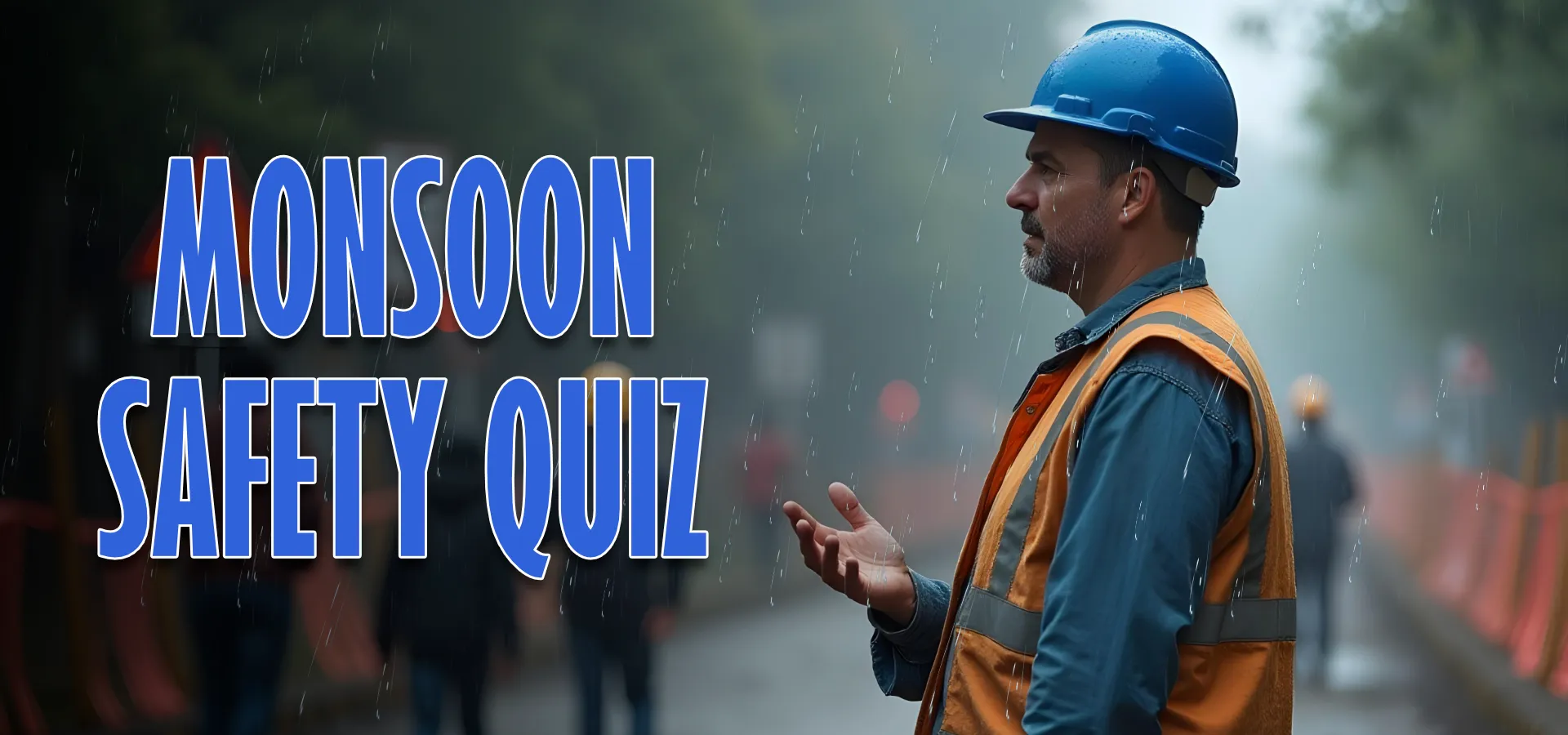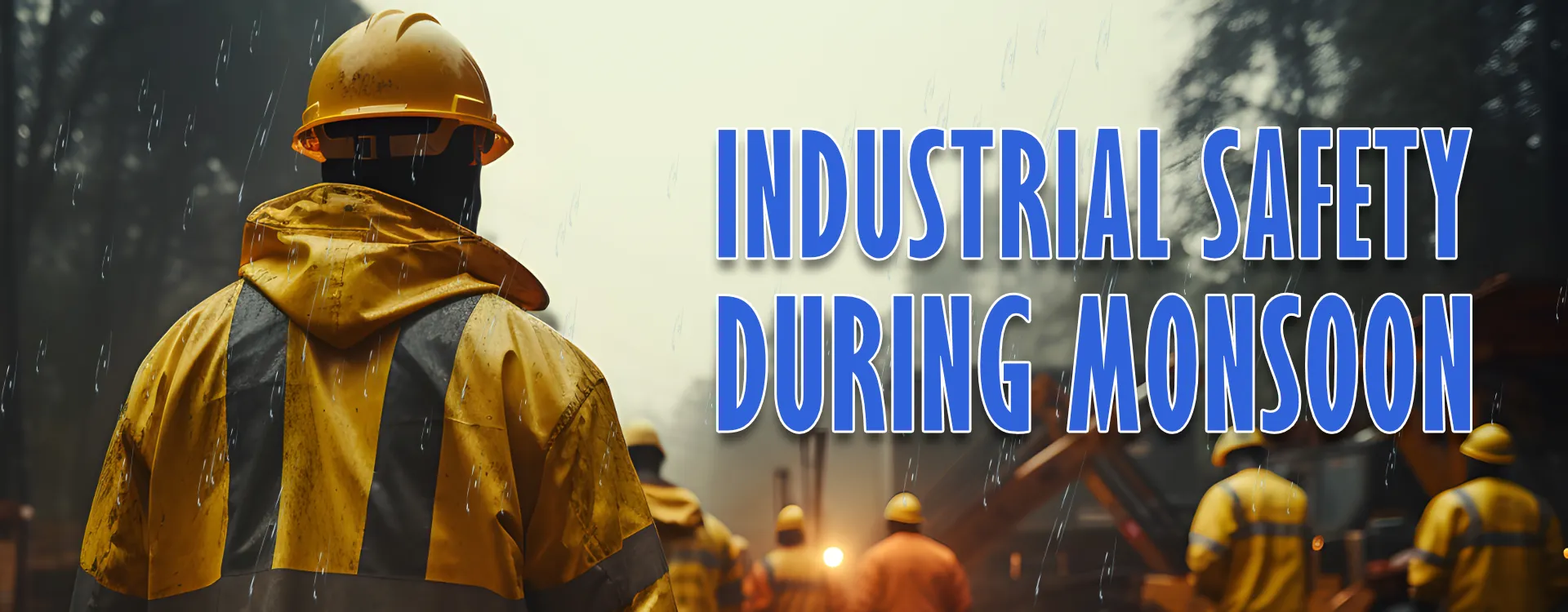
When the skies open up and the rains start pouring, nature puts on a beautiful show. But for industries, the monsoon season is more than just scenic beauty. It brings real challenges, such as slippery floors, soaked equipment, electrical risks and logistics delays. Ensuring industrial safety during monsoon is not just about compliance; it’s about protecting your people, your processes and your productivity.
Why Monsoon Safety Should Be a Priority?
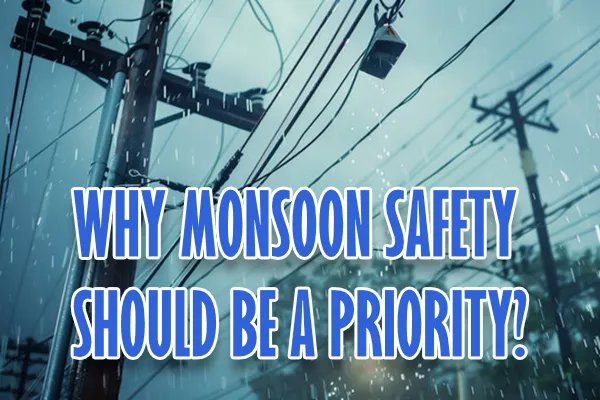
Rainwater, humidity and unpredictable storms can cause serious disruptions. Electrical faults, weakened structures and increased health risks are just the beginning. Without proactive planning, a few days of heavy rainfall can turn into weeks of repair and recovery.
The monsoon season affects almost every aspect of industrial operations. From water seepage damaging machinery to reduced visibility during outdoor work, the challenges are many. Flooded pathways can slow down the movement of goods and staff. Damp conditions may lead to rust, mold and unsafe working surfaces, all of which contribute to a higher risk of injury or equipment failure.
In addition, heavy rains can impact supply chains, delay deliveries and make transportation unsafe. Electrical equipment is especially vulnerable during this season. A minor leak or unnoticed fault can result in short circuits or even fires, putting lives and property at risk.
By identifying these threats early, industries can put safety measures in place. Regular inspections, maintenance schedules and clear emergency protocols help manage risks better. Investing in monsoon safety is not just about compliance. It is about keeping people safe and maintaining business continuity through the storm.
Monsoon Season Hazards That Impact Industrial Safety
The rainy season brings specific threats to industrial environments. While rain may seem harmless, it can cause serious damage when it enters workspaces. Identifying these hazards early helps reduce accidents and avoid costly disruptions. Here are the most common dangers:
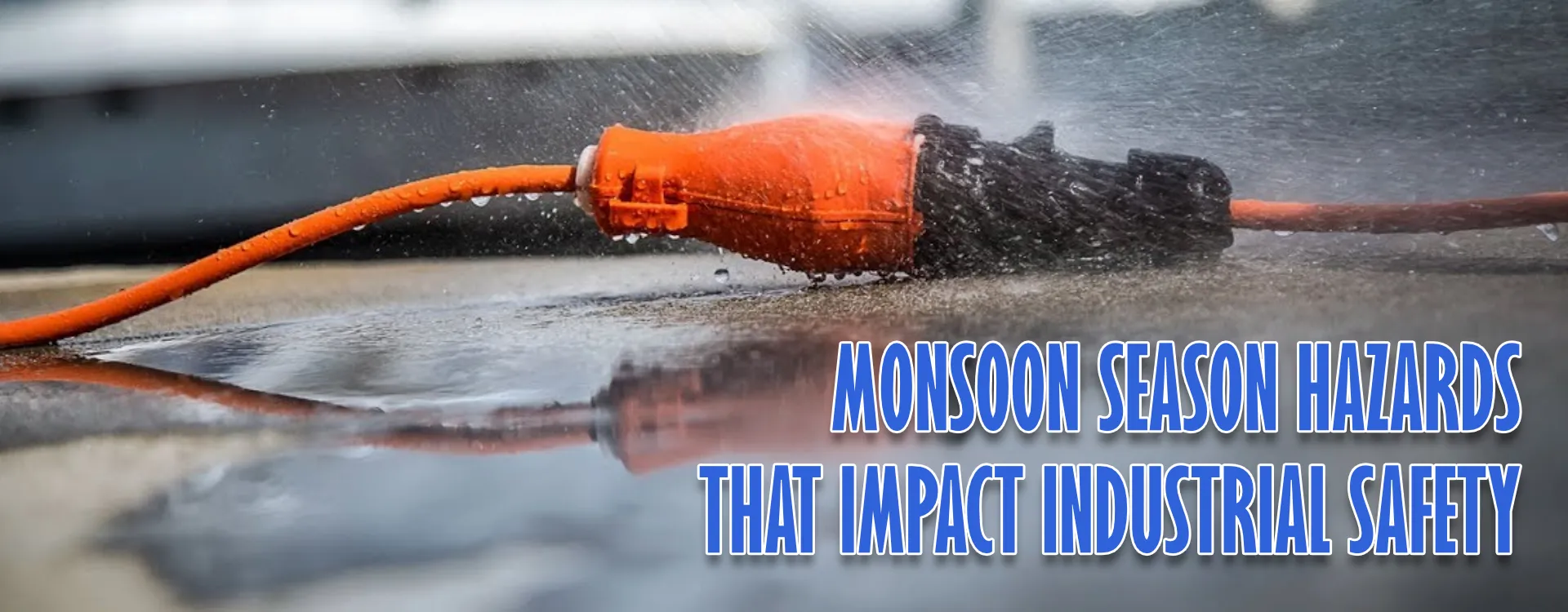
Electrical System Failures
Rainwater or moisture can enter electrical panels, wires or machinery. This can lead to short circuits, power failures or even fire accidents. These faults not only damage expensive equipment but also pose serious risks to workers.
Slippery and Wet Floors
Wet surfaces are a leading cause of slips, trips and falls. In busy work areas, this becomes a safety hazard. Injuries from such incidents can delay work and increase medical and insurance expenses.
Rust and Corrosion
High humidity and damp conditions speed up the rusting of machines, tools and metal structures. Corrosion reduces equipment life, increases maintenance needs and affects overall productivity.
Flooded Work Areas and Storage Spaces
Heavy rain can cause water to collect inside work zones and storage units. This can spoil raw materials, damage goods and create unsafe working conditions. It also slows down daily operations.
Delayed Supply Chains
Blocked roads, traffic jams and poor visibility during heavy rainfall can delay transportation. Deliveries may be late or cancelled, affecting production schedules and client commitments.
Structural Leaks and Weak Foundations
Constant exposure to rain can lead to roof leaks, wall seepage and foundation damage. Over time, this weakens the building structure, increasing the risk of collapse or major repairs.
Effective Safety Measures to Tackle Monsoon Challenges
To keep operations stable during the rainy season, industries must follow smart, preventive safety practices. These measures protect both people and equipment while ensuring minimal disruption to daily activities. Below are essential steps to monsoon-proof your industrial site:
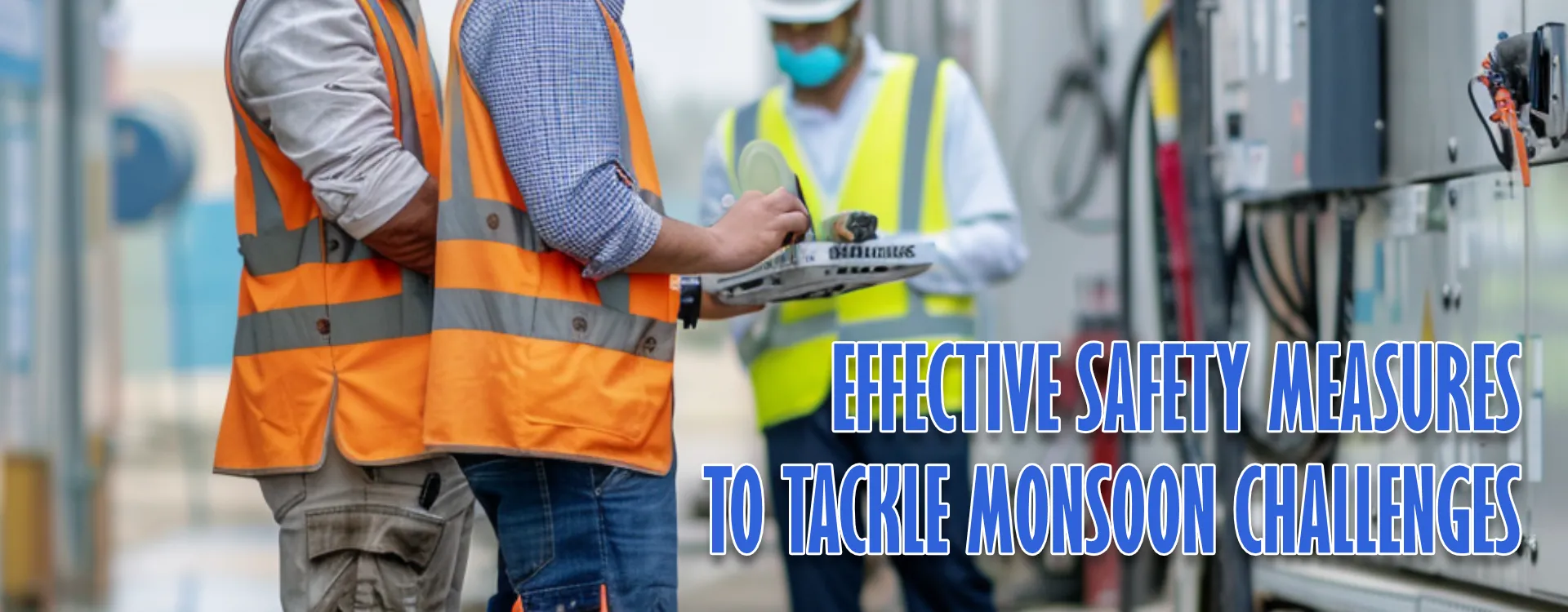
Inspect and Maintain Electrical Systems
Carry out a thorough inspection of all electrical units before the rains begin. Ensure all wiring is properly insulated and fittings are moisture-resistant. Outdoor equipment should be covered with protective enclosures. It’s also wise to schedule regular maintenance checks during the season to catch problems early.
Improve Drainage and Water Management
Clean all stormwater drains, rooftop gutters and sewage lines regularly. Install grates or filters to prevent debris from entering the system. Consider installing sump pumps in low-lying areas and keep sandbags or water barriers ready in flood-prone zones. Water management is not just about flow but also about quick removal and redirection.
Use Anti-Slip Flooring and Safety Mats
Install anti-slip mats in entrance areas, corridors and near machinery. Choose materials that are durable and have strong grip, especially in high-traffic zones. Use clear signage to warn workers about wet areas. Ensure housekeeping staff is trained to mop and dry wet floors promptly.
Protect Equipment from Moisture
Use industrial-grade tarpaulins or waterproof covers for machines that cannot be moved. Apply rust-preventive coatings on metal parts. Shift sensitive tools and electronic components to dry, sealed storage areas. Also, run dehumidifiers in control rooms or server areas to manage moisture levels.
Check Structural Integrity
Inspect roofs for broken tiles, clogged gutters or damaged waterproofing. Check walls for damp patches, cracks or paint bubbles that indicate water seepage. Make sure foundations are firm and drainage around the base is clear. Reinforce weak areas and carry out repairs well before the monsoon sets in.
Fire Safety Still Matters in the Rain
Make sure all fire extinguishers are checked and ready to use. Conduct regular fire drills and review your evacuation routes. Flammable materials must be stored in waterproof, sealed containers. Inspect smoke detectors and alarms to ensure they’re working properly.
Keeping Workers Healthy and Safe
The well-being of your workforce is just as important as your equipment. Monsoon brings a higher risk of infections and mosquito-borne illnesses. Provide waterproof jackets, boots and gloves to employees, especially those working outdoors. Ensure clean drinking water, dry rest areas and regular sanitization of high-touch surfaces. Use repellents and fumigation to control mosquitoes. When your workers are healthy, your operations run smoother.
Plan for Emergency Situations
Train all staff in emergency response protocols. Conduct mock drills regularly. Keep essential supplies such as first-aid kits, battery-operated lights, emergency contact lists and fire extinguishers in accessible locations. Backup generators and water pumps should be tested and fueled regularly. Ensure all exit routes are marked and kept clear.
Coordinate with Suppliers and Transport Partners
Stay in regular contact with suppliers and transport companies to track shipment status. Plan ahead and order critical raw materials in advance. Maintain buffer stocks of essential items to keep operations running if deliveries are delayed. Transparency and communication are vital during this season.
Monsoon Safety Videos
How Different Industries Can Prepare for the Monsoon?
Every industry faces different challenges during the monsoon. A general safety plan is not enough. Each sector must take customized steps to protect its people, equipment and processes. Below are some tailored safety practices for various industries:
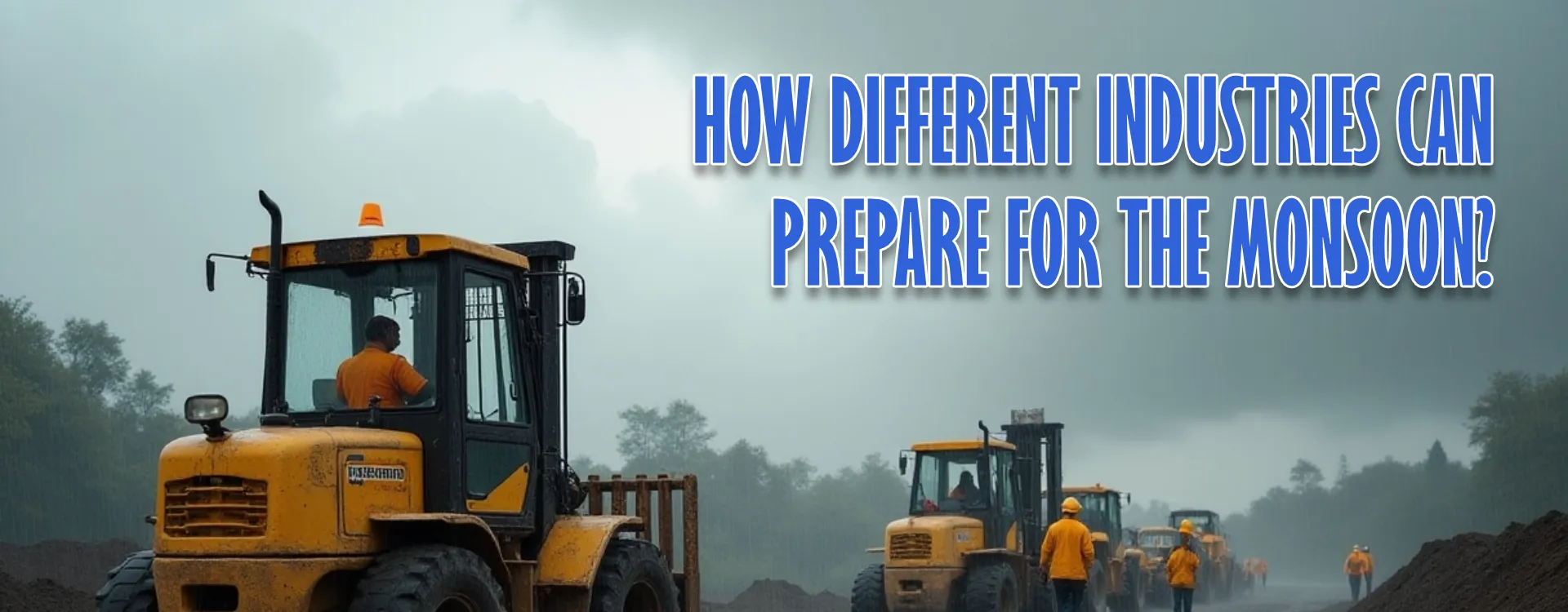
Chemical Plants
Chemical storage during the monsoon requires extra attention. Even small leaks can lead to dangerous reactions. Make sure all chemicals are stored in waterproof, sealed containers. Separate incompatible substances to reduce the risk of cross-contamination. Storage areas should be elevated and away from water entry points. Regularly inspect tanks, drums and pipelines for signs of corrosion or leakage.
Textile Units
Humidity is a major threat to fabric quality. High moisture levels can lead to mold growth, fabric discoloration and damage to stored goods. Install industrial dehumidifiers across storage and production areas. Ensure all packaging is waterproof before transportation. Avoid storing textiles directly on the floor and use pallets to prevent contact with water.
Pharmaceutical Facilities
Cleanrooms and production zones in pharmaceutical industries need strict climate control. Excess moisture can affect drug quality and shelf life. Regularly inspect and service HVAC systems, air filters and dehumidifiers. Maintain controlled temperature and humidity levels at all times. Entry points must be tightly sealed to avoid water and contaminant entry.
Construction Sites
Heavy rains can bring work to a standstill and create hazardous conditions for workers. Avoid high-rise activities during intense rainfall or lightning. Provide workers with proper safety gear such as non-slip boots, rain suits and harnesses. Use tarpaulins to cover materials like cement, wood and steel to prevent damage. Also, ensure proper drainage at the site to avoid muddy and slippery work zones.
Food Processing Units
Moisture invites pests and affects food safety. Keep raw materials in dry, sealed containers. Inspect storage areas for leaks or damp patches. Seal cracks, vents and other entry points to block insects and rodents. Maintain strict hygiene and regularly clean floors, equipment and drainage lines. Use moisture absorbers in storage rooms where necessary.
Electronics and Electrical Industries
Electronic components are highly sensitive to water and humidity. Exposure can cause rust, short circuits and functional failure. Store all parts in dry, climate-controlled areas. Use silica gel packs and anti-static bags to absorb moisture and prevent electrical damage. Ensure that all packaging is sealed tightly before dispatch.
Conclusion
Monsoon brings beauty, but it also brings risks that industries cannot ignore. By understanding the challenges and preparing in advance, companies can protect their people, equipment and operations. From electrical safety and structural checks to employee health and emergency planning, every step counts. Industrial safety during monsoon is not just a seasonal task. It is a responsibility that ensures smooth operations, reduced losses and most importantly, the safety of every worker. Stay prepared, stay safe and let the rains come without worry.
